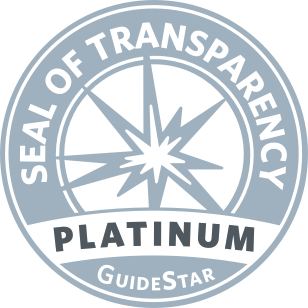Over 1,000 new cases of Hirschsprung’s disease are diagnosed in the USA every year. More than half the children treated appropriately with surgery for Hirschsprung’s disease suffer from chronic problems with constipation, incontinence, and/or abdominal pain. Even as adults, over half will experience occasional episodes of incontinence, and 10% will endure constipation unresponsive to medical management.
In the six decades since Ovar Swenson recognized that the distal bowel segment (lower part – most frequently the anal canal, rectum and sigmoid colon) lacking nerve cells was the diseased portion and created the first successful surgical technique, surgeons have been frustrated with the imperfect response to surgery, which otherwise eliminates the disease. Parents are frustrated and children shamed when the children fail to gain control over their bowel movements.
Over the past 10 years the pediatric motility community has discovered reasons and solutions for chronic post-operative problems. It is clear that it is not the child’s behavior, but rather recognizable and treatable causes, that produce the symptoms.
Constipation
There are three mechanisms for chronic post-operative constipation:
- functional constipation;
- neuropathy, or abnormal functioning of nerves above the aganglionic segment; and
- hypertensive anal sphincter, in which the sphincter doesn’t relax normally, making it difficult to push stool past it.
It is not easy to distinguish among these conditions when they follow Hirschsprung’s disease surgery. Only colon and anorectal manometry (measurement of pressure or contractions in the intestinal tract) clarify the diagnosis and treatment.
Constipation is the most common condition referred to pediatric gastroenterology clinics, and functional constipation is the most common variant in children. It often arises when an infant or toddler has a painful bowel movement. Infants and toddlers normally respond to a painful event by thereafter avoiding the event, like when they burn a finger on a hot stove. When they have a painful bowel movement, they attempt to avoid defecation, and after a few days have an even bigger, more painful bowel movement. This cycle of painful defecation and withholding behavior will continue until the child experiences a sustained period of painless defecation.
Children with Hirschsprung’s disease are even more likely to experience painful or frightening defecations than healthy children, because they have so many different negative experiences around their bottoms. First, they get enemas and rectal studies before surgery. Next they have the surgery itself. Immediately following successful surgery, many children with Hirschsprung’s disease have diarrhea for weeks. Diarrhea may break down sensitive skin under the diaper, and the child recognizes intense pain after each bowel movement. Because of the pain, infants learn to hold back their stools, and continue retentive behavior even after the diarrhea resolves because they fear the pain associated with a bowel movement.
A few children need dilation (stretching) when there is scar formation that narrows the new rectal cavity (lumen) just above the anus. Dilations require that a surgeon or parent stretch the narrowing by running a few inches of a lubricated, smooth plastic or metal spindle through the anus. If dilations are done without proper analgesia and sedation, this painful, frightening event discourages the infant or toddler from defecation.
Sometimes surgeons suspect that a severe infection called enterocolitis is brewing inside. Enterocolitis is diagnosed when there is blood and pus in the stool, fever, abdominal pain, and distention. The physician will order daily enemas and washouts to clean out the colon. These procedures, although possibly lifesaving, prevent the child from learning to control his bottom, and may provoke fear and consequently more retentive behavior. Then the infant’s abdomen swells from retaining stool, and the surgeon worries more about enterocolitis, so that the cycle of fear (for clinician, parents, and infant) and pain (for the infant) is perpetuated.
Treatment begins with educating the child and parents about the disorder. It is not dangerous. It is not a disease; it is a maladaptive but understandable response to painful stools. The colon cannot burst. Toxins do not leak back into the body from the colon. Non-stimulant laxatives are safe and effective. The clinician will prescribe enough oral polyethylene glycol to melt away the mass of stool in the rectum over a few weeks. Polyethylene glycol is a crystal powder that dissolves odorless, colorless, and tasteless into the child’s favorite drink, so that adherence to the prescribed dose is not a problem. It is not an emergency to get out the stool mass, and the more important goal is to return control of the child’s bottom back to the child.
It is a good idea to see the doctor at least once a week for a few weeks, so that the doctor can listen to the parents’ concerns and evaluate the stool mass by feeling the abdomen. There must be no rectal examinations during this period, because rectal examinations frighten the child with functional constipation, and so interfere with treatment. Time is an ally. The child will let the stool out when he wants to do so. After the stool mass is gone the physician will continue to prescribe polyethylene glycol for many months, until the child and the parents are confident that acquisition of toilet skills is complete, and the fear is gone.
Learn More about Treatment of Functional Constipation
Neuropathy proximal to the aganglionic segment is the second mechanism for chronic post-operative constipation. About 10% of all Hirschsprung’s children have this problem. Although the aganglionic segment is removed (resected) and the remaining tissue appears healthy on examination under a microscope (histology), the nerve connections are not right.
Children with neuropathy proximal to the aganglionic segment have abnormal results from colon manometry, a test that measures pressure or contractions. Sometimes there is a high-pressure zone in one spot that does not relax to let colon contents flow by. Sometimes there are simultaneous contractions, but no coordinated, propulsive contractions. Sometimes there are no contractions at all. Most of the time the neuropathy is part of the Hirschsprung’s disease, present from birth but unrecognized. Occasionally there may be a transient, treatable neuropathy due to the complications of inflammation after Hirschsprung’s enterocolitis.
When there is a history of enterocolitis it may be worth a trial of anti-inflammatory drugs (e.g., sulfasalazine) or antibiotics (e.g., metronidazole or clarithromycin). When there is no history of enterocolitis, one choice the doctor may recommend is using polyethylene glycol to keep stools watery for life, so that they flow without needing good motility. Another choice, better when the neuropathy involves a long segment of colon but the small bowel is spared, is surgery to remove all of the diseased colon.
Colon Manometry
Colon manometry discriminates functional constipation from colon neuropathy. Colon manometry is a simple test taking two or three hours in most cases, but preparation is complicated.
First, the colon must be free of all solid stools. Cleaning out the colon may be unnecessary in a child with diarrhea, or a difficult problem in a child with a colon filled with hard stool. Cleaning out the colon may be planned over weeks, so that it does not cause fear or pain. If it is necessary to clean out the colon quickly in an uncooperative child, it may be helpful to hospitalize the child for a nasogastric tube, a flexible plastic tube placed through the nose and throat and into the stomach, followed by medicine given through the tube that causes bowel movements in rapid succession. In children who vomit easily a nasogastric tube may not work, and repeated enemas may be necessary.
Once the colon is cleaned out, the child is sedated. While he or she sleeps, the doctors place a thin plastic tube through the child’s anus to measure the pressure in the anal sphincter. Then the doctors use a colonoscope, a plastic tube with a camera at the end, to look inside the colon. A colon manometry catheter, a thin plastic tube with recording sites spaced 10 or 15 cm apart, is then placed through the anus to the beginning of the colon, and the colonoscope taken out. The catheter is taped in place and its position confirmed with an x-ray.
As the child wakes, the study begins. The child is encouraged to stay awake with peaceful, quiet-time activities. Parents are encouraged to comfort the child, and to ask questions about the study as they watch the results appear on the computer screen next to the bed.
After an hour, the child eats lunch, which normally causes an increase in colon contractions. In healthy unconstipated children and children with functional constipation the colon makes high-amplitude propagating contractions (HAPCs), the physiologic marker for colon neuromuscular health. HAPCs are strong coordinated contractions that start at the beginning of the colon and move colon contents towards the anus before ending in the sigmoid colon, just before the rectum, the last portion of the colon.
Once HAPCs begin, it is most important to observe the child’s behavior: many children show distress, or stiffen and straighten their legs to hold stool in. Sometimes it can be pointed out to the child that the HAPC on the computer screen correlates with the urge to have a bowel movement or the pain that they feel. The child can also be told that what he or she is feeling is normal, and the suggestion made that they allow themselves to have a bowel movement instead of holding it. In neuropathy, HAPCs and the increase in contractions after a meal are absent. If there are no HAPCs before or after the meal, the doctor will give bisacodyl, a stimulant laxative, through the catheter directly into the colon. In healthy children with functional constipation bisacodyl stimulates HAPCs in 10 or 20 minutes. In children with neuropathy, there are no HAPCs after bisacodyl. When the study is completed the catheter is withdrawn painlessly through the anus. Kids say the worst part of the testing is taking the tape off the IV and the catheter.
If HAPCs occur during manometry, the risk of enterocolitis is low, and chances are that the problem is one of failed toilet learning. When HAPCs are present, the best course is to stop doing all procedures that frighten the child, stop all procedures through the child’s anus, and assure painless defecation.
Moreover, it is often necessary to get a mental health professional familiar with Hirschsprung’s disease and childhood defecation disorders to treat the child and help the family to cope. Often the child is too frightened to have a bowel movement for many days. With each passing day the parents get more anxious that something is wrong. The child catches the fear from the parents, and the fear keeps the child from having a bowel movement. If the doctor recognizes the symptoms and signs of bowel obstruction, and fears disease complications, he will order a battery of tests and treatments. In fact, there is an obstruction, but in the situation described it is exactly at the anal sphincter because the child is afraid to relax the anal sphincter. This can be managed; the cycle of fear and withholding behavior can be broken. To do so, frequent communications, confidence, and trust – among the parents, mental health professional, and physicians – are absolutely necessary.
Hypertensive anal sphincter is the least likely cause of constipation, affecting about 5% of children with constipation after Hirschsprung’s disease surgery. In children with hypertensive anal sphincter, the anal sphincter pressures are so high that stool cannot pass even when there is a high-amplitude propagating contraction.
Hypertensive anal sphincter is diagnosed by anal manometry when the child is asleep. If the child is studied while awake, there might be a false positive result because the child tenses up with fear when a tube is inserted through the anus to measure the sphincter pressure.
Occasionally a hypertensive anal sphincter may respond to botulinum toxin (Botox) injection. However, Botox treatment often fails, immediately or within a few months after a transient response.
Surgical anal sphincterotomy is the best treatment for hypertensive anal sphincter, but sphincterotomy (cutting through the sphincter) is a delicate procedure. If the surgeon cuts too little there is no effect; if the surgeon cuts too much there may be lifetime stool incontinence. Therefore, sphincterotomy should be considered only if a hypertensive anal sphincter is documented by manometry under anesthesia [and only after careful consideration of risks, benefits, and alternative treatments].
Fecal Incontinence
Fecal incontinence has more than one mechanism in post-operative Hirschsprung’s disease: high-amplitude propagating contractions through the neorectum (newly created rectum), and functional fecal retention.
The rectum is a storage area for stools, and in Hirschsprung’s disease the diseased rectum has been removed. In the healthy colon, stool moves several times each day when there is a very strong contraction that travels from the beginning of the colon all the way to the sigmoid colon, the area just above the rectum. When the rectum is healthy these high-amplitude propagating contractions (HAPCs) dump the colon contents into the rectum. The decision of whether to have a bowel movement or not is voluntary, because the rectum can relax and stretch to the volume required. After Hirschsprung’s surgery, the rectum is gone, and HAPCs move colon contents to the anal verge with pressures that exceed the anal sphincter pressure. The child has two choices: relax the sphincter and experience incontinence, or hold tight as long as possible and experience intense crampy pain, the kind that we all get when we have to go urgently but cannot get to the restroom.
There is another abnormality that makes incontinence even more likely in many children with HAPCs through the new rectum. When the colon is surgically cut (transected), there are more than the usual numbers of high-amplitude propagating contractions. Instead of several HAPCs each day, there may be as many as several each hour. In health there are no HAPCs during sleep, but after colon surgery, HAPCs may occur during sleep, causing incontinence. Day and night incontinence improves in most instances with a prescribed small dose of amitriptyline at bedtime. Amitriptyline reduces the pressure waves pushing out the stool, and reduces chronic pain.
The second cause of post-operative fecal incontinence is functional fecal retention. A large stool accumulates in the rectum. However, just like all of us, the child still needs to pass gas about 20 times every day. The sensitive lining of the anal canal (anoderm) can detect the difference between hard stool and gas, and between hard stool and liquid, but not between gas and liquid. Occasionally, some liquid stool will ooze around the big, hard stool mass. When the child relaxes the anal sphincter to pass gas, liquid that has seeped around the hard stool leaks out at the same time. While at first children may deny or try to avoid discussing the problem, by school-age many children will finally endorse this explanation for their incontinence. The treatment of functional fecal retention is discussed above.
Many children over 4 years of age blame absence of anal and colon sensation for incontinence. Sensation of the colon and anal sphincter are never affected by Hirschsprung’s disease. The child may be having a problem with misunderstanding the signals coming from the bowel to the brain, but restoring the brain’s recognition of normal sensations is part of the child’s learning experience as he or she acquires normal toilet behaviors.
Abdominal Pain
Abdominal pain may occur whenever the child senses an urge to defecate, but chooses to tighten the sphincter and avoid a bowel movement. Some children with a normal increase in colon contractions after a meal perceive those contractions as a pain rather than an urge to have a bowel movement. Over time the urge to defecate may change to a pain perception, so that the child no longer recognizes when it is time to have a bowel movement.
This change in perception from a sensation that does not hurt to one that does is called hyperalgesia, and is caused by physiological changes in the pain nerves that run from the gut to the brain, and in pain centers in the brain. A child who has had early life pain experiences, like surgery for Hirschsprung’s disease, is at risk for developing hyperalgesia.
The abnormal nerve physiology is reversible, and there are effective treatments for visceral hyperalgesia. Prescription drugs such as amitriptyline and gabapentin slowly return pain nerve transmissions to normal in most children. For older children, in some families cognitive behavioral therapy (CBT) may be preferred to drugs. CBT is a program that takes an hour each week, usually for about 10 weeks. CBT teaches the child to use the thinking part of the brain to take control of pain centers that may seem beyond control. Some children benefit from a combination of cognitive behavioral therapy and drugs that reduce pain transmission to the brain.
Outcomes
Parents worry that life for children with constipation or incontinence after Hirschsprung’s disease surgery will not be as good as for other children. Parents worry that suffering from these problems, or years with a colostomy or ileostomy may impair a child’s personality or quality of life in later years. There is good news for these parents. Adjustment for teenagers and young adults with Hirschsprung’s disease is no different than for healthy children. The number of interventions or amount of suffering experienced does not correlate with getting along in life. The most important predictor of successful adjustment for children growing up with Hirschsprung’s disease is unconditional love and acceptance by their families.
Read Courageous Stories from Adults
Currently only a handful of motility centers across the USA offer colon manometry. However, if your child with Hirschsprung’s disease is not doing well after surgery, and if there are unanswered questions about diagnosis or treatment, talk to a physician experienced in pediatric GI motility and get the answers to your questions before you make life-altering decisions.
Adapted from IFFGD Publication: Defecation Disorders after Surgery for Hirschsprung’s Disease #830 by Paul Hyman, MD, Professor of Pediatrics, Louisiana State University, Chief, Pediatric Gastroenterology, Children’s Hospital, New Orleans, LA.








